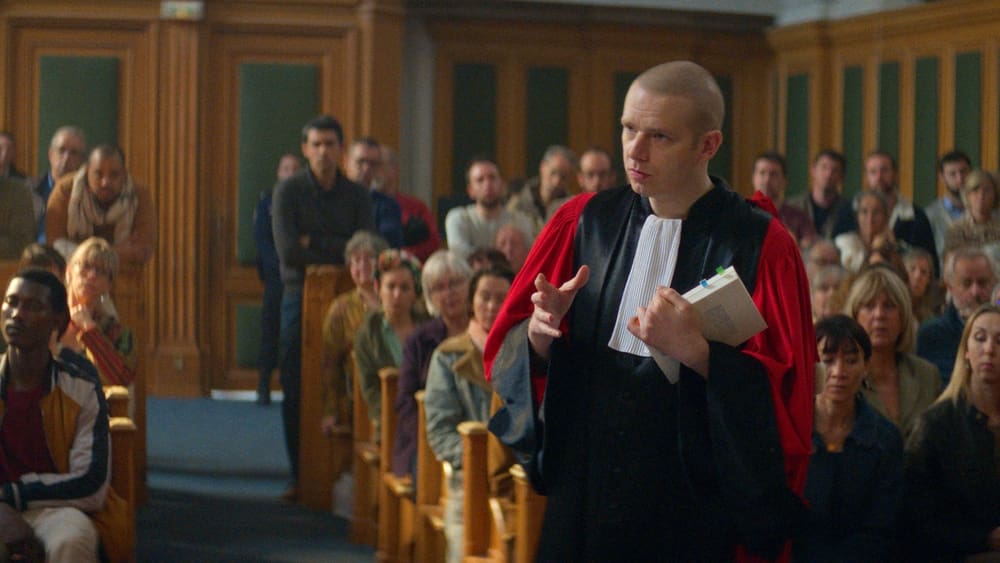One aspect of Justine Triet’s Palme d’Or winning “Anatomy of a Fall” has stuck with me since I saw it last week in what is otherwise a fairly standard (albeit very good) courtroom drama. In the middle of what has been a long, embittered court battle, the prosecuting attorney attempts to implicate the witness, Sandra, in the murder of her husband based on the content of her published writing. The argument the prosecutor makes is because the characters in Sandra’s fictional novels express thoughts of violence and hatred toward others and because Sandra writes from such a personal place (often lifting situations directly from her life), it is safe to assume that she harbors these same thoughts towards her family and, in particular, her now deceased husband. I’m unsure whether or not this could be used as a viable legal argument (surely not, right?), but I can’t shake the idea itself. Good or bad, how much can we tell about a person through their art?
In any writing class I’ve ever taken, the primary starting point that teachers have consistently preached is to write what you know, maybe even directly about experiences you’ve had. That doesn’t mean every action and setting needs to come from your own life. That would shut several creative doors, including departures into many historical, fantastical, or surrealist genres. You don’t need to have been a soldier during World War I to write a story about being a soldier during World War I. The emotions are what counts — take how you have felt or how you imagine someone you know has felt and put that in an environment with characters that speak to you. Artists don’t even need a direct relationship to these emotions and ideas. Curiosity about something new can take you down a rabbit hole of discovery, and your art is part of that exploration.
From this perspective, every work of art reflects its artist, likely the train of thought that led the prosecutor in “Anatomy of a Fall” to use Sandra’s work as evidence of her guilt. Whether conscious or not, any work of art is drawing on the experiences and knowledge of its artist. It engages with questions that confound and expresses parts of the artist that could only come out in the abstract. Each artistic decision is overflowing with their personal biases, ideology, and view of how people and the world work.
However, the idea that art is always a reflection of its artist can lead to a dangerous binary where art can’t be morally compromised without painting the artists themselves in a negative light. Shunning artists who take risks with grimmer, grayer material sanitizes the contradictory, sometimes dangerous, thoughts that real people have and deal with. Art allows people an outlet to work out those uncomfortable feelings. The results aren’t always profound (or even good), but it's emotionally rewarding for the artist and whoever connects with the work. If we as a culture go down this path of moral puritanism in our art, we will reflect a world that doesn’t exist. It will lead to boring, incurious pieces that are aspirational but unattainable. They may still be reflections of their artists, but they will reflect who they want to be rather than who they are, or worse yet, they will reflect how shallow and anti-intellectual they are.
There’s another extratextual reason that these questions of how art reflects its creator resonated with me. I don’t think Triet is interested in any of these ideas as they relate to the characters in her film. For one thing, this argument is such a minor part of the trial and factors so little in the verdict at the end of the story that it's hard to claim this is one of the key thematic points. Nor do I think their minimal examination in the film’s narrative, or anything else the film explores dramatically, warranted the overwhelming praise “Anatomy of a Fall” garnered at the Cannes Film Festival in May.
I think what generated such fervor in French cinema was the way these ideas push back against auteurism, the mode of criticism that came about among French critics during the 40s and 50s that looked at how studying the totality of a filmmaker’s work can reveal a lot about their personality and what they are interested in. “Anatomy of a Fall” feels like it's dismissing the formal ideas of New Wave cinema, opting instead for formal classicism that might fit in more with the Tradition of Quality that the Cahiers du Cinéma critics were responding to. The camera movements, the editing, and the material all feel like a return to something traditional. But at this point in history, is doing something traditional fresh? Do we need to return to something of a status quo before another new wave comes through to break the rules of the medium once again? “Anatomy of a Fall” may be setting up something greater to come than its genre formula can allow it to be. And Triet’s critique of auteurism suggests she knows it isn’t one person who can start this new movement. It’s a collective.

